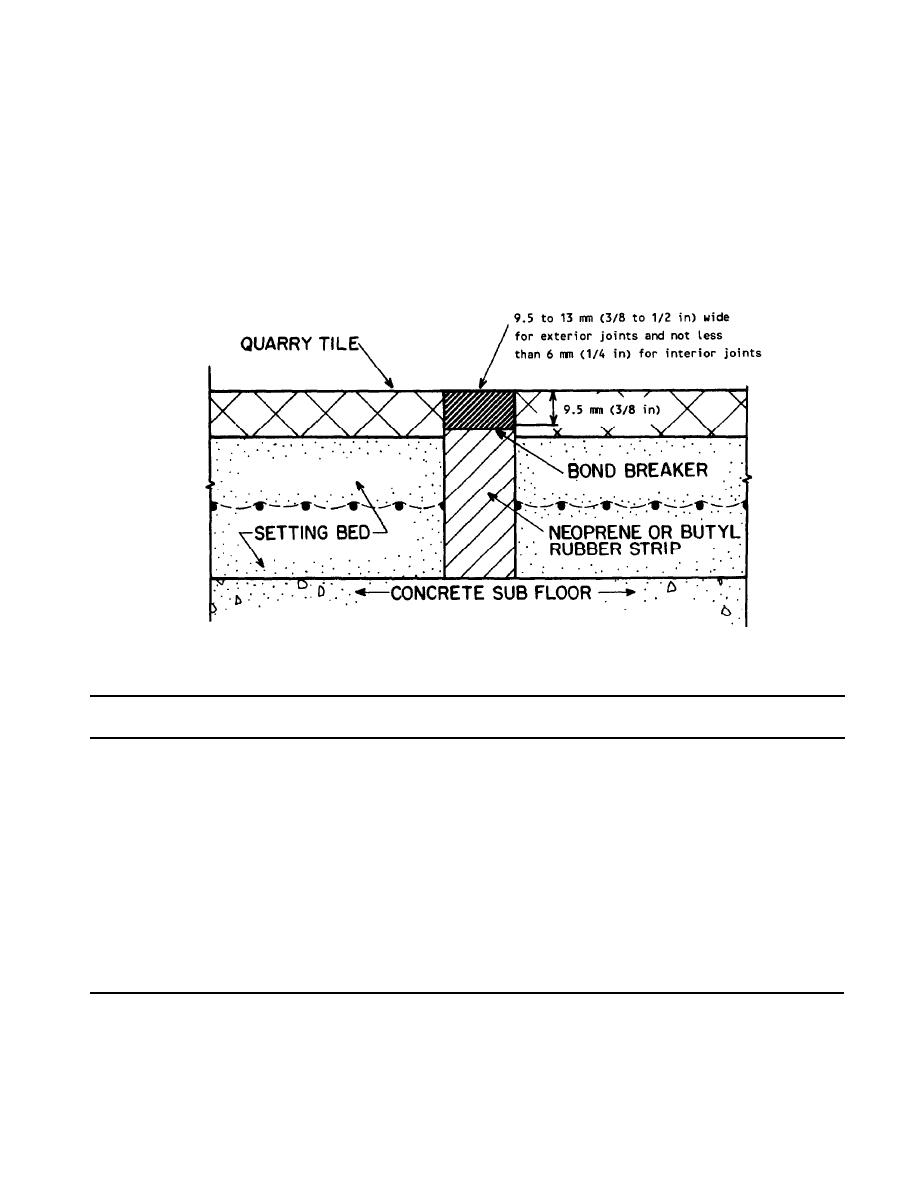
TM 5-805-6
move independently of each other. Stationary
material which can move with the sealant.
joints can be configured as shown in figures 4 and
c. Expansion and control joints. Expansion and
5, except that a bond-breaker is not needed be-
control joints should be treated as moving joints,
cause there will be no deformation of the sealant
including those control joints that do not penetrate
(or caulking). In a stationary joint, the backing
the material but provide a weak place where a
may be a rigid material.
crack can develop in the material beneath the
b. Moving joints. Joints that move are generally
joint. A control or expansion joint in tile is shown
configured as shown in figures 4 or 5, and in every
in figure 9.
case the bottom of a moving joint should be
d. Table 2 lists typical joints used in construc-
tion.
protected by a bond-breaker or by a backing
Figure 9. Control or Expansion Joint in Tile.
Table 2. Typical Joints
Joint
Paint
Suggested
Cure
Traffic
Figures
Over
Time
Sealants
Type
CONTROL
NO
1-COMPONENT SILICONE
NO
DAY
4,5
CONTROL
NO
YES
1-COMPONENT POLYSULFIDE
4,5
DAY
CONTROL
YES
1-COMPONENT POLYURETHANE 4,5,7,9
YES
DAY
CONTROL
NO
NO
HOURS
2-COMPONENT SILICONE
4,5
YES
HOURS
2-COMPONENT POLYSULFIDE 4,5
CONTROL
NO
CONTROL
2-COMPONENT POLYURETHANE 4,5,7,9
YES
YES
HOURS
6
DOORS AND NO
YES
DAY
OIL- & RESIN CAULK
WINDOWS
2-COMPONENT POLYSULFIDE 6
NO
YES
HOURS
2-COMPONENT POLYURETHANE 6
HOURS
YES
YES
PREFORMED SEALANT
YES
NONE
8
CEILING TO NO
WALL
13


 Previous Page
Previous Page
